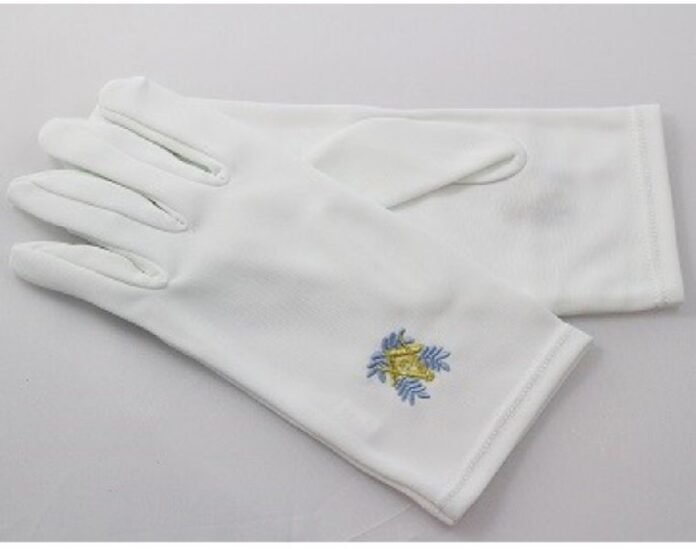Freemasons wear Masonic gloves. Some have the Freemason insignia of a square and compasses, while others do not. This is due to the fact that certain jurisdictions do not allow marks on Masonic gloves. The symbolism of Freemason gloves is comparable to that of Freemason aprons.
What does the Gloves Symbolizes?
White Freemason gloves are flawless, and they represent that a man’s works must be as clean and spotless as the gloves.
The apron represents a ‘pure heart,’ while the gloves represent ‘clean hands.’ They both denote cleanliness and relate to the purifying of one’s life. Ablutions were used to signify cleansing during the ancient entrance into the holy mysteries. Others might take the washing of hands here as a sign of interior cleansing. Pure hands represent pure activities, whereas wicked hands represent human injustice.
Masonic White Kid Gloves
A newly initiated Freemason is traditionally given two pairs of white children’s gloves in Germany, France, and several other European nations. One is for him, and the other is for his wife, lover, or the woman he most admires.
The Presentation of Masonic Gloves
Gloves are still worn during ceremonies in America and England, despite the fact that they are no longer presented. Members of many lodges dress suitably in their white aprons and white gloves.
Washing of Hands
Previously, there had to be a washing of the hands before being initiated into the ancient secrets. This was done to show purity from crime and to qualify individuals who sought to be allowed to the secret ceremonies. The washing of the hands was a symbol of purity that the ancients scrupulously observed. Some religions still take it seriously today. No one prayed to the gods in ancient days until they had cleaned their hands.
Ecclesiastical Gloves
This was also a prevalent practice among Jews. When the Jews yelled that Jesus must be killed, Pilate stepped in front of them, got water, and washed his hands, telling them that he washed his hands to show that he was innocent of Jesus’ blood.
White Gloves
Bishops, priests, and certain other clerics wore gloves when performing ecclesiastical tasks during the Middle Ages. The gloves were always made of linen and were white. White gloves represent purity and chastity. This demonstrates that the hands were maintained impurity-free and clean.
Masonic Gloves and Purity
From what has been described above, it is clear that gloves have historically been worn, and Masonic gloves represent a continuation of such practices. Masonic gloves, as seen from above, represent purity.
Masons in the Middle Ages are said to have established the habit of wearing gloves in Freemasonry.
Builders moved in groups to various locations around Europe, where they were actively involved in the construction of churches and palaces. Masonry’s name, customs, languages, and other aspects arose from them. They were also accountable for the creation of Masonic gloves.
Masonic Gloves of Operative Masons
M. Didron gives us with an engraving from the painted glass of a window in the cathedral of Chartres, France, in his “Annales Archeologiques.” The artwork, which was completed in the thirteenth century, depicts a group of operational masons at work.
Three of them are wearing laurel crowns. Isn’t this supposed to symbolise the three officers of a lodge? The Masons all wear gloves.
M. Didron observes that in the old texts he has read, gloves meant for masons and stone-cutters are frequently mentioned. In a later issue of the “Annales,” he provides three examples of this fact:
- In 1331, the Chatelan of Villaines in Duemois purchased a large supply of gloves to be distributed to the workers in order, as it is claimed, “to cover their hands from the stone and lime.”
- According to a document from the time, three dozen pairs of gloves were purchased and distributed to the masons when they began work on the buildings at the Chartreuse of Dijon in October 1383.
- Finally, in 1486 or 1487, twenty-two pairs of gloves were given to the stone-cutters and masons who were engaged in the city of Amiens work.
Final Thoughts:
As a result, it is clear that the Middle Ages builders, the operative masons wore gloves to protect their hands from the impacts of their job. It is also clear that the speculative Masons got the Masonic gloves and apron from their operational forefathers, both of which, while employed for practical purposes by the latter, have been seized by the former in the spirit of symbolism for “a more lofty and wonderful cause.”


